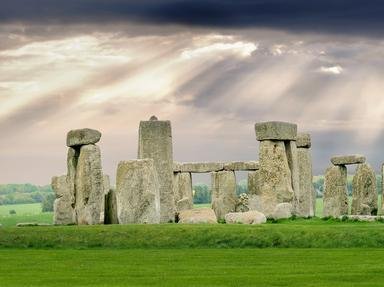Quiz Answer Key and Fun Facts
1. The name "Zimbabwe" has been interpreted to mean "stone houses" in the language of what ethnic group of Southern Africa, whose ancestors are believed to have built the city?
2. The remains of Great Zimbabwe were first encountered in the 16th century by traders from what European nation, which colonized a large part of Southern Africa?
3. Modern scholars agree that Great Zimbabwe was built in what century - which saw key events in European history such as the East-West Schism and the Norman Conquest of England?
4. The wide availability of what valuable resource was a defining factor in the establishment and development of Great Zimbabwe?
5. What intriguing feature, shared with other iconic ancient sites, characterizes the mighty walls surrounding the Great Enclosure, the most famous of the site's three main areas?
6. The other two main areas of the Great Zimbabwe site are the Valley Ruins and the Hill Complex. By what name, which might remind you of another celebrated ancient site, is the Hill Complex also known?
7. The Valley Complex, believed to have been the city's residential area, is dotted with the remains of what kind of buildings?
8. Eight soapstone carvings were found in the ruins of Great Zimbabwe. What do these artefacts represent?
9. What is believed to be the most likely cause for Great Zimbabwe's abandonment?
10. Which of the following theories about Great Zimbabwe's origin has NOT been advanced at some point?
Source: Author
LadyNym
This quiz was reviewed by FunTrivia editor
stedman before going online.
Any errors found in FunTrivia content are routinely corrected through our feedback system.
